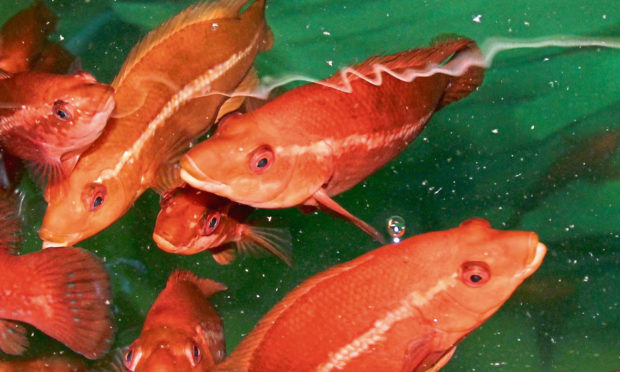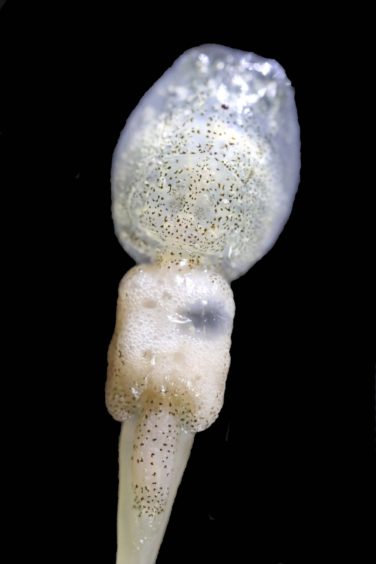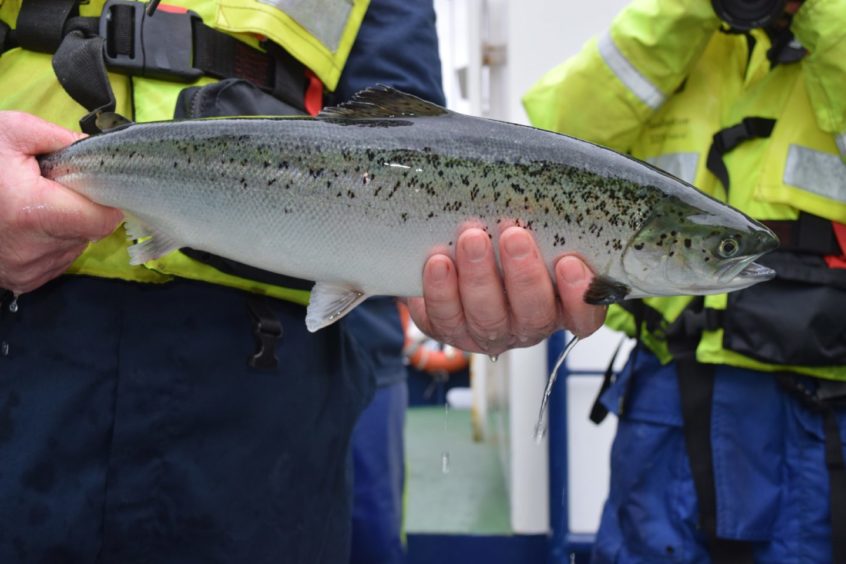How do you keep “complex” ballan wrasse happy in captivity? – Scottish aquaculture experts aim to find out and save the salmon farming industry millions.
Wrasse clean other fish of parasites and have already been found to help control sea lice in farmed salmon.
The lice can devastate stocks and cost the fish farming sector tens of millions of pounds a year to control.
But ballan wrasse are said to display “complex behavioural traits”, meaning their ability to function as effective delousers depends on keeping them well-fed and content in their environment.
A new project supported by the Sustainable Aquaculture Innovation Centre (SAIC), cleaner fish producer Otter Ferry Seafish, nutrition firm BioMar, and salmon farmers Scottish Sea Farms and Mowi is focused on finding the best conditions to help cleaner fish to thrive and help to tackle sea lice.
Researchers are considering a range of nutritional and environmental factors, such as the formulation of feeds and rearing conditions, and how they impact the growth and performance of ballan wrasse.
It is hoped their work will improve the robustness, welfare and resilience of ballan wrasse used in salmon pens, and boost their ability to deal with sea lice.
Outcomes of the research project could be used to scale up hatchery production.
Ballan wrasse are already used widely by the aquaculture sector but current levels of demand outstrip the supply coming from hatcheries, with around four cleaner fish per 100 salmon being optimal.
‘Survival of the fittest’
Professor Herve Migaud from Stirling University’s Institute of Aquaculture said: “Years of research have taught us that ballan wrasse are a complex fish species.
“Their behaviour can be significantly impacted by environmental factors from a very early developmental stage including the nutrients they are given, especially as they have a rudimentary digestive system without any stomach.
“In the wild, it can be a case of survival of the fittest, and the fish tend to develop a level of resilience that we are aiming to understand and recreate in a controlled environment.
“Exploring the impact of different variables in the hatchery process, in particular, can help us to create the best possible conditions to help the fish thrive and prepare them for when they are deployed into a salmon farm.”
Prof Migaud added: “The demand for cleaner fish is growing and the aim is to get to a point where we can meet the demand for healthy and effective hatchery-reared ballan wrasse, and enable the sector to reach full reliance on farmed rather than wild cleaner fish in coming years, ultimately helping salmon farmers with a sustainable solution to sea lice.”
SAIC chief executive Heather Jones said: “The project builds on years of valuable cleaner fish studies, and is a prime example of how innovation and collaboration can help solve challenges in new ways for the benefit of the entire sector.
“Determining the best conditions for ballan wrasse, and communicating the results and recommendations across the aquaculture sector and supply chain could lead to significant progress in the collective efforts to tackle sea lice sustainably.”
The problem of sea lice in salmon farms
Scottish research into tube worms’ threat to mussel production
New £100k training scheme for women in aquaculture and rural sectors
UK minister insists Scottish seafood export problems are easing


